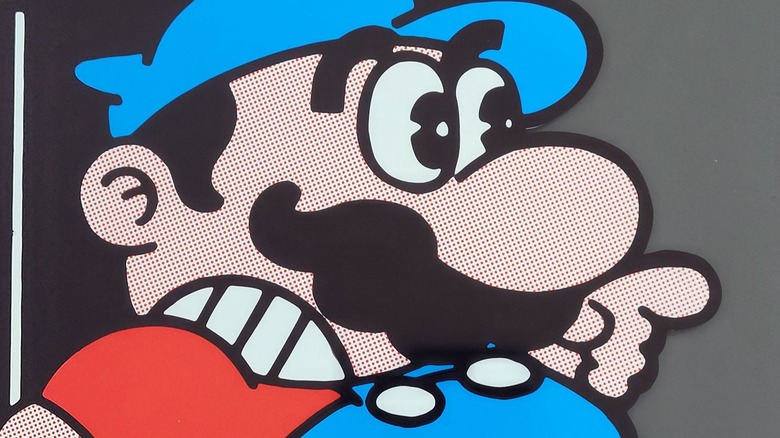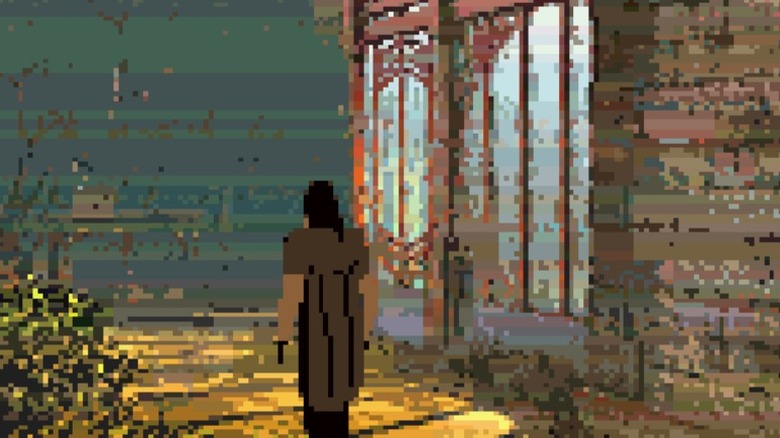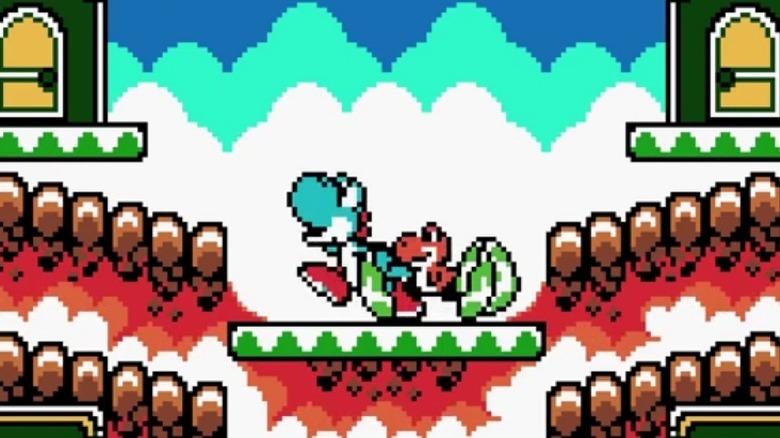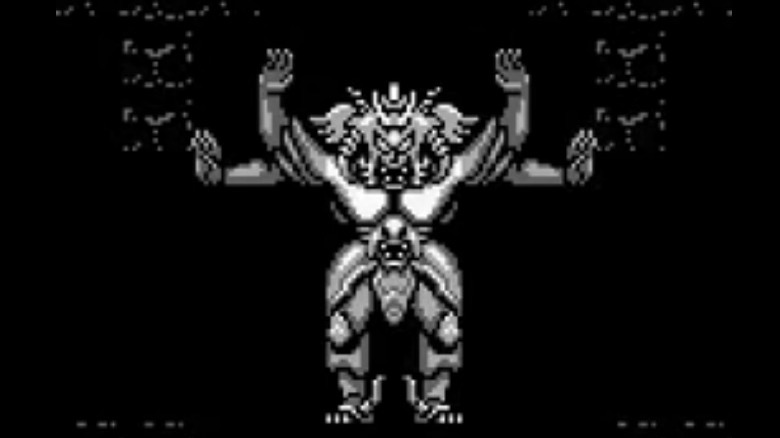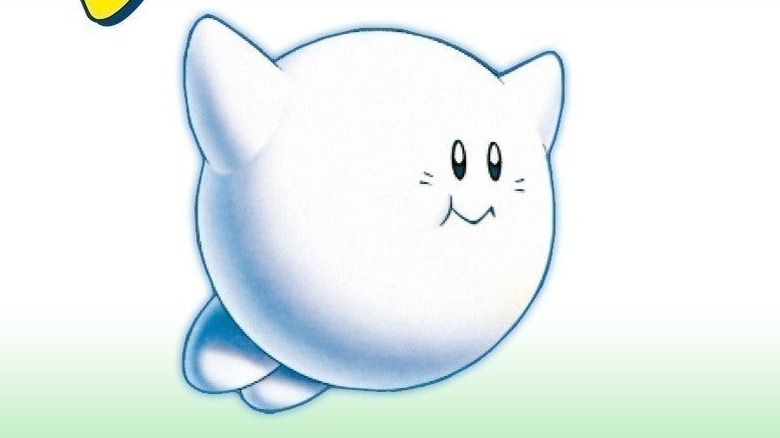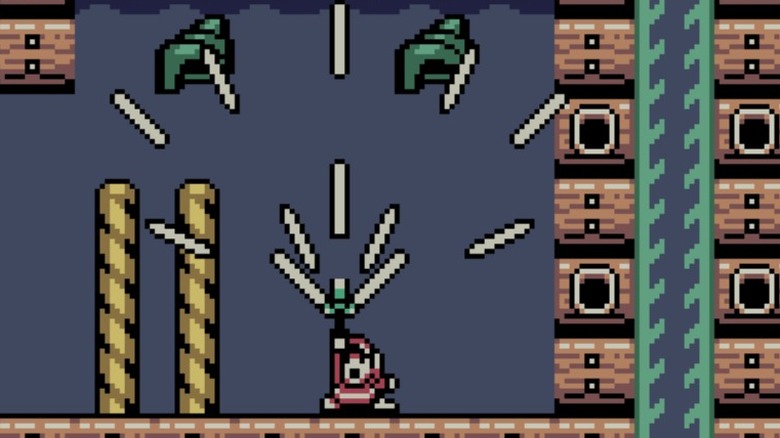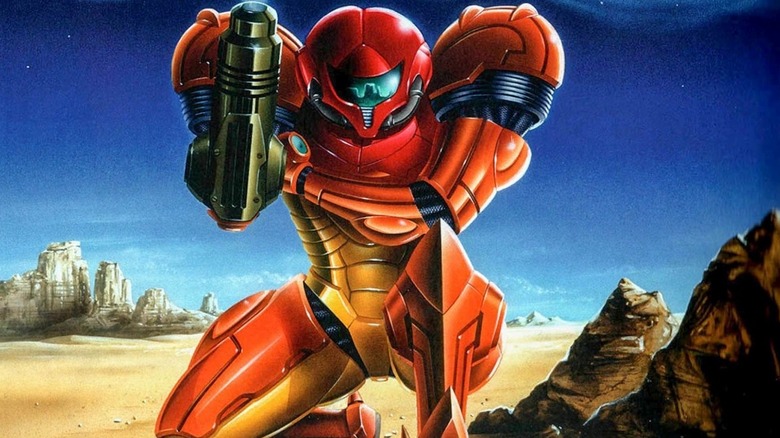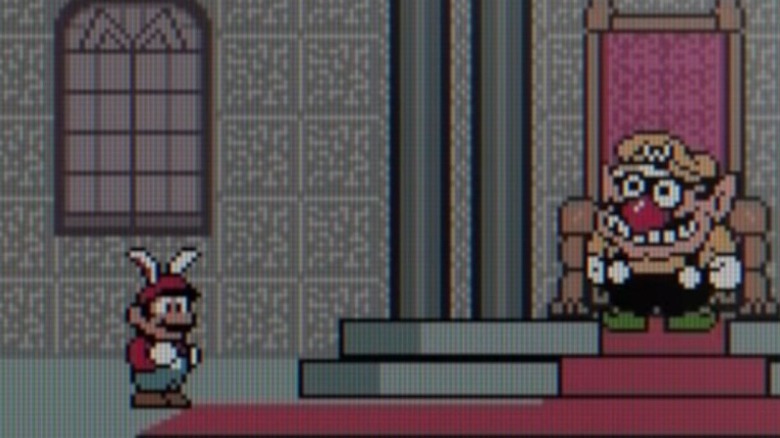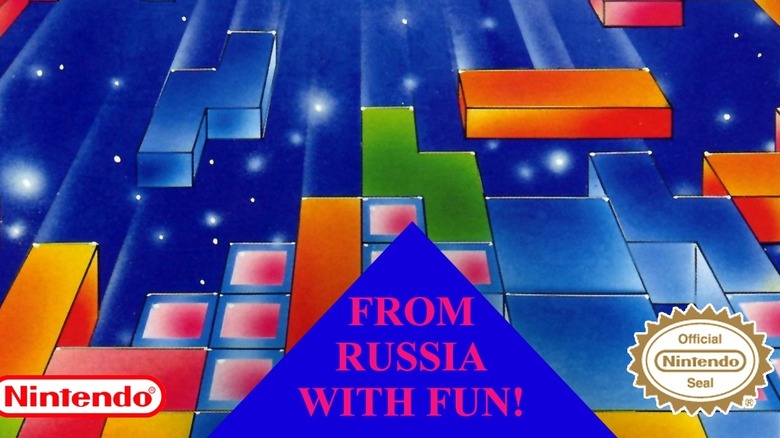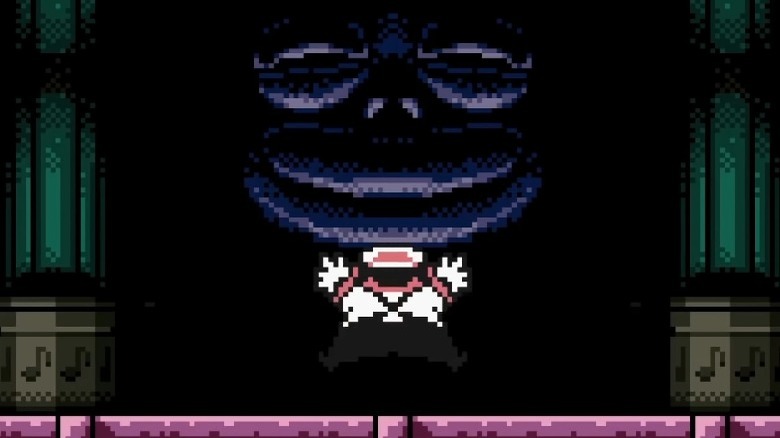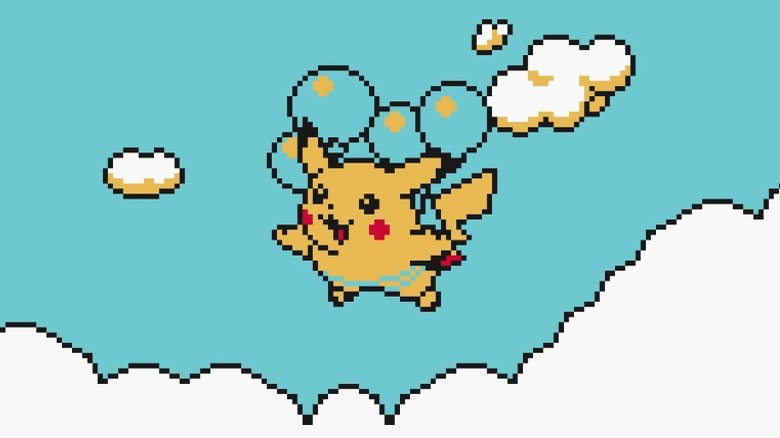Every Day One Game Boy Game On Nintendo Switch (And One We Can't Believe They Left Off)
Every Nintendo Direct is an opportunity for the company to share its most exciting news with gamers around the world, and on February 8, 2023, the company dropped a bomb for anyone who loves to reminisce about the days when gaming on handhelds still felt fresh and new. That's right: Game Boy games are now on Nintendo Switch.
Nintendo is bringing back some of its greatest hits and letting fans delve into the histories of their favorite franchises. "Zelda" fans can go back and explore the story of "Link's Awakening" as it was originally told, and Kirby fans can play through the character's very first outing! With a horror game like "Alone in the Dark: A New Nightmare" and a sci-fi adventure like "Metroid 2: Return of Samus" on the roster, there's a Game Boy title for everyone.
But even then, the Nintendo's launch to the Game Boy lineup on Switch isn't perfect. There's one missing game that seems like such an obvious inclusion, yet didn't make the list. Decide for yourself if the Game Boy coming back for a victory lap in 2023 is worth getting excited about, and whether or not the missing title ruins the entire experience.
Alone in the Dark: The New Nightmare
"Alone in the Dark: The New Nightmare" is a multiplatform horror title that was released for Windows, PlayStation, Dreamcast, and the Game Boy Color in May 2001. The fourth game in the "Alone in the Dark" series offered players all the excitement and horror they'd come to expect, along with a few new twists — like an unexpected GBC port.
The story follows Edward Carnby and Aline Cedrac, who both find their way to the mysterious Shadow Island for different reasons. Edward is there to investigate the apparent murder of his friend Charles, while Aline is assisting Professor Obed Morton as he searches the island for ancient artifacts. Their stories intertwine, and players can follow the path of either character, experiencing different parts of the story and entirely different game mechanics as they go into the dark, well, alone.
Understandably, the version released on the Game Boy Color had to be somewhat stripped back to match the console's capabilities. Simplified cut scenes are paired with slightly modified story. Players are also only able to experience Edward's path in this version, which makes the game lean more towards horror action, with fewer puzzles to solve. The changes hurt the game's critical reception back in the day, but it's still notable as a tentpole horror series making its way to the Game Boy.
Game & Watch Gallery 3
Nintendo has a long history of diving headfirst into the development of new technology that ultimately pushes the entire gaming industry forward. Back in the 80s, the company created the Game & Watch, a pocket-sized gaming device that came loaded with (as the name might suggest) a game and a clock. Most systems included two variations of a single game that users could swap between on the fly. The handhelds were a massive success, and today they're some of the most collectible vintage gaming items around, sometimes auctioned off for thousands of dollars.
The Game Boy eventually replaced the Game & Watch line, but because the earlier console had been so successful, Nintendo ported most of its catalog over to the new system by way of the "Game & Watch Gallery" anthology series.
"Game & Watch Gallery 3" brought 10 new titles to the Game Boy, including "Egg," "Greenhouse," "Turtle Bridge," "Donkey Kong Jr.," and an alternate version of the arcade's "Mario Bros." Five additional games can be unlocked, increasing the collection's replay value.
The Game & Watch games might not exactly be groundbreaking or among Nintendo's best material anymore, but they do represent a golden age for the company. Anyone with a passion for Nintendo history or retro gaming in general might want to consider taking a spin through this anthology.
Gargoyle's Quest
"Castlevania" might be Capcom's greatest spooky side-scroller series, but Game Boy fans probably have equally fond memories of this 1990 release that played with some of the same mechanics. "Gargoyle's Quest" features an overworld that functions a bit like "Final Fantasy," but its individual locations feature all the side-scrolling action and hidden secrets that players want from the genre. The game also incorporates some minor RPG elements, like allowing players to collect upgrades and equipment that can change their play style as they progress.
What newcomers might not know is that this game is actually an extension of the "Ghosts 'n Goblins" arcade game. Players take on the role of Firebrand, a lowly gargoyle who's destined to grow up, smash enemies, and save the entire Ghoul Realm from the threat of an evil king. The simple story is given a boost by charming music and an inspired art direction that spawned some truly great boss battles, especially for a Game Boy title.
The world of "Gargoyle's Quest" hasn't had quite the staying power of other Capcom titles. Only two sequels were ever released, and they were spread across the NES and SNES consoles, but hopefully this latest release on the Switch will help the series soak up a little more of the spotlight. And if you dig this one, there's great news: the SNES sequel, "Demon's Crest," is playable via Nintendo Switch Online.
Kirby's Dream Land
It's hard to believe that Kirby is over thirty years old, but his story kicked off on the Game Boy in 1992 with "Kirby's Dream Land." The game introduced series mainstays like Sparkling Stars, King Dedede, and of course Dream Land itself. Kirby made a splash right away; not only did he look cuter than any other character out there, but he also approached his platforming problems in a unique way: by eating everything in sight. Inhaling items and enemies allows Kirby to spit them out to deal damage or swallow them whole to send them into oblivion. Though nowadays everyone knows Kirby can absorb the powers of anything he swallows, that actually didn't become an option until later games.
Kirby's signature method of clearing out levels, along with his ability to fly around the map by inhaling some extra air, shook up the platforming genre and immediately endeared the character to gamers everywhere. Thirty years later, there are more than a dozen games about Kirby, and a whole slew of spin-offs and remakes to choose from, but modern reviewers think "Dream Land" still holds up nicely.
The Legend of Zelda: Link's Awakening DX
1998 was a simpler time when connecting to the internet made a lot more noise, Y2K seemed like a bigger deal than it ended up being, and handheld games were only just beginning to be released in color. "The Legend of Zelda: Link's Awakening DX" broke a bit of new ground when it made its way to the Game Boy Color that year. It was the first "Zelda" game to land on the updated system, and it was an early instance of remastered editions giving old favorites a face lift.
"Link's Awakening" began as a Game Boy game in 1993. It acted as a sort of follow-up to the SNES hit "A Link to the Past," but it was the first game in the series not actually set in Hyrule. The game takes place on an island called Koholint, which Link crashed his ship into. In order to go home, Link needs to find a way to wake the magical Wind Fish that lives on top of a mountain. His journey takes him all across Koholint as he meets locals and battles enemies new and old alike.
"DX" brought the game into color and made small additions to the original experience, including a brand new dungeon. This latest release will be a new link to the past for modern gamers (pun totally intended), allowing players to experience the early stages of the "Zelda" handheld era. It's an entry so beloved that it even received a faithful remake a few years ago.
Metroid II: Return of Samus
In the early days of Nintendo, following your favorite game franchise often meant hopping from system to system in between releases. The first "Metroid" game debuted in 1986 on the Famicom Disk System and made its way to the NES a year later. Along with "Castlevania," it helped inspire an entire genre of labyrinthine side-scrolling adventures, and it's arguably still one of the best sci-fi games of all time.
Cut to 1991, when Nintendo finally released a sequel for the game... on the Game Boy. Developed by Intelligent Systems, "Return of Samus" continues dishing out the alien-blasting combat that made the first game such a hit. The game's storyline is thin, but still a bit hard to follow with the system's limitations. The entire "Metroid" timeline is as confusing as whatever is happening over in Hyrule, but suffice it to say that Samus is back to clean up yet another Metroid infestation.
Unlike the first game, however, "Return of Samus" provides players with an obvious objective. Progression is tied to the amount of Metroid variants that have been killed in a particular area, so moving through the various sections of the game is as simple as putting Samus's iconic blaster arm to work.
Super Mario Land 2: 6 Golden Coins
Mario gets to take a break from chasing Princess Peach and Bowser from castle to castle in this game that originally debuted in 1992. This time around, a new villain has managed to move into Mario Land while everyone's favorite plumber was off fighting against aliens (the original "Super Mario Land" had a very strange plot). The villain is none other than Wario, making his very first appearance in the franchise. But before Mario can come face-to-face with his new enemy, he'll have to collect 6 Golden Coins from across the land.
All that set-up leads exactly where any Mario fan would expect it to: straight into some classic platforming action. Aside from featuring a relatively nonlinear structure that lets players collect the Golden Coins in whatever order they choose, "Super Mario Land 2" doesn't really pack in any surprises in terms of gameplay. But if it ain't broke, don't fix it, right? IGN gave the game a solid review when Nintendo re-released it through the 3DS Virtual Console back in 2011, and there's no reason to suspect that the Nintendo Switch version will play any differently.
Tetris
"Tetris" has been around for decades, and despite the core mechanics of the game remaining unchanged for nearly 40 years, it's never gotten old. "Tetris" is one of the most successful video games of all time, and the game no doubt owes a sizable amount of its sales to the Game Boy itself.
Game designer Henk Rogers once told IGN Japan about how he helped Nintendo secure the rights to put "Tetris" on its handheld console, and he was instrumental in making sure that a copy of the game was sold with every system. Minoru Arakawa, president of Nintendo of America, wanted to include a Mario game because it was the company's signature property, but Rogers told him, "If you want little boys to buy your Game Boy, pack in Mario. But if you want everyone to buy your Game Boy, pack in 'Tetris.'" Arakawa took that advice — and ended up selling 35 million copies of "Tetris" on the Game Boy. It's no wonder why Nintendo wants multiple version of this bad boy on the Switch.
Now that Game Boy version of the game is available to Switch players, is there anything special about it? Not really, but it doesn't need to be. Game Boy "Tetris" is just classic "Tetris," but there's nothing like a nostalgic trip back to one of the greatest successes that video games ever had.
Wario Land 3
After being introduced in "Super Mario Land 2," Wario became a pretty big deal. "Super Mario Land 3" became his game, with Mario himself only showing up for a guest appearance near the end. The "Wario Land" franchise had officially begun, jumping to the Virtual Boy for the first game without Mario's name attached before returning to the Game Boy Color for "Wario Land 3."
The most immediately noticeable difference between Mario and Wario is the way they each respond to their enemies. Unlike Nintendo's iconic plumber, Wario transforms every time he gets hit by an enemy, adopting a new set of powers almost like Kirby does after eating a large meal. Depending on the enemy, Wario might turn into a ball, start ice skating, or turn invisible. In addition to his transformations, he can grab a handful of different power-ups that give him even more abilities. It's chaotic fun.
In "Wario Land 3," the titular character discovers a music box inside a cave and instantly gets trapped inside a sprawling world within it. If he ever wants to return home, Wario needs to find 5 other magical music boxes hidden throughout the world, and he'll need to overcome a number of obstacles and bizarre creatures in order to do it. The game is a great way to add some new variety to the typical Mario format if you're finding it a bit stale.
We can't believe there's no Pokemon
There are some amazing Game Boy games now available on the Switch, and we're thankful for the option to relive the handheld's glory days on a modern system. There are going to be countless hours sunk into "Wario Land 3," "Kirby's Dream Land," and all the other hits that Nintendo has put up for grabs. It almost feels wrong to complain about a lack of options with so many great games on the table, but when Nintendo is excluding the Game Boy's best selling game, complain we must.
Of course we're talking about "Pokémon." Four games released for the handheld, but not exactly four different games. "Pokémon Red," "Pokémon Blue," "Pokémon Green," and "Pokémon Yellow," were all essentially the same, just with small differences like exclusive Pokémon, different localization, and some updated visuals. Together, the games sold over 47 million copies, putting even the bundled-in "Tetris" to shame.
"Pokémon" has obviously gone on to be one of the most successful gaming franchises that Nintendo has ever had, so it seems odd not to include it in the Switch's first batch of Game Boy games. The move will certainly leave some fans with ruffled feathers. One can only hope it's because Nintendo is holding back a special "Pokémon" surprise for Switch players. Only time will tell when fans can do some classic Pokémon catching on the hybrid console.

